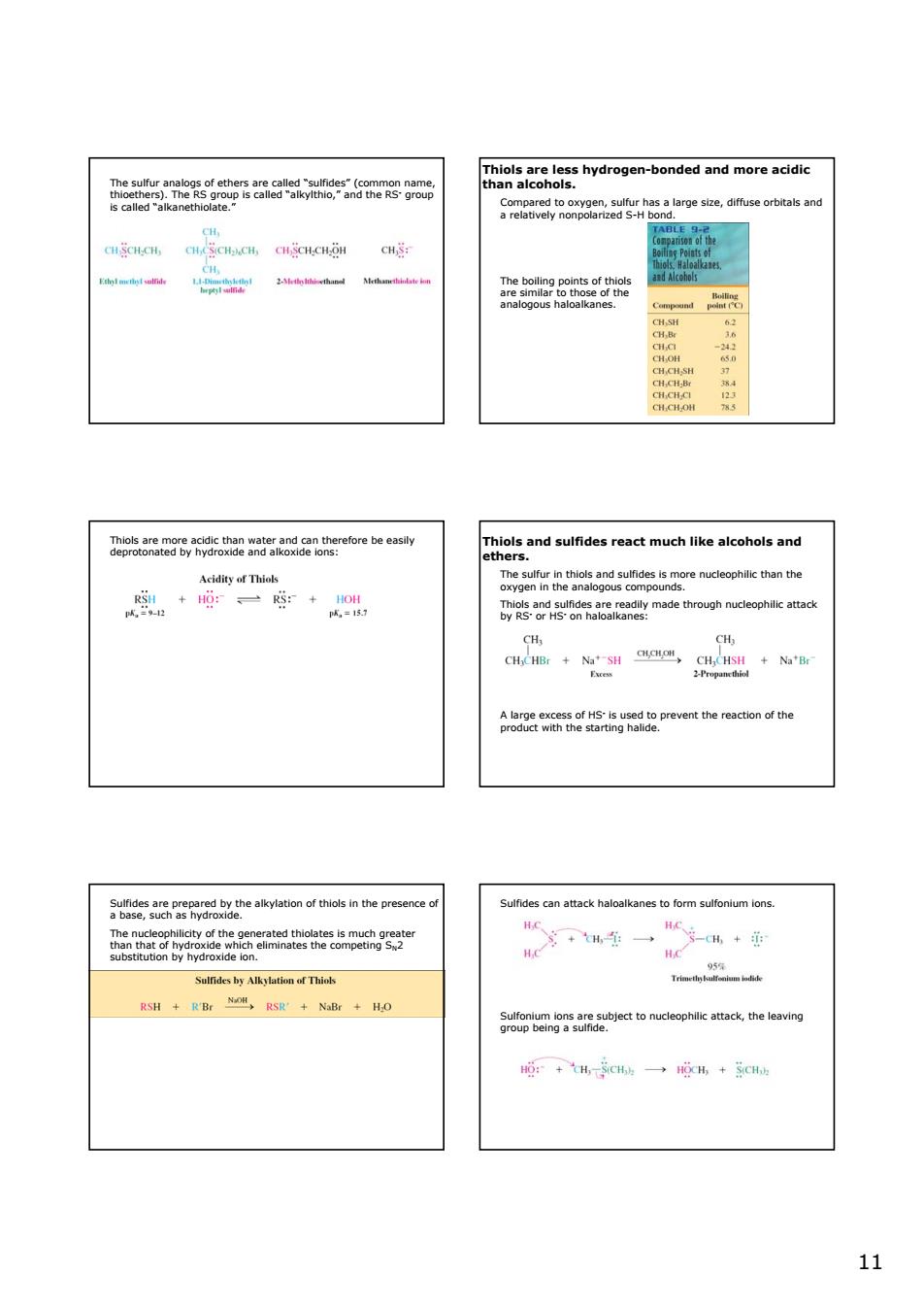正在加载图片...

g器m Thiols are less hydrogen-bonded and more acidic aie6tw8y1ep26ngrHhgaargeae,dhseorbtasang 2-Mhcboldisthan oe2 he6oa36ywohaeagaenotgroowbeoasW ho and sulfides react much like alcohols and Acidity af Thioks than the 。+g一容+ wa5a01g6e5n5gea2mad9 hrough nucleophilic attac eoaacsngaoreeneedeacute Sutfides can attack haloalkanes to form sulfonium ions Selfides by Alkylation of Thiols RSH R'Be RSR'HO Spbenggtabyoctomucophicatacttheeavng 5:+H,-5cH→H+C 11 11 The sulfur analogs of ethers are called “sulfides” (common name, thioethers). The RS group is called “alkylthio,” and the RS- group is called “alkanethiolate.” Thiols are less hydrogen-bonded and more acidic than alcohols. Compared to oxygen, sulfur has a large size, diffuse orbitals and a relatively nonpolarized S-H bond. The boiling points of thiols are similar to those of the analogous haloalkanes. Thiols are more acidic than water and can therefore be easily deprotonated by hydroxide and alkoxide ions: Thiols and sulfides react much like alcohols and ethers. The sulfur in thiols and sulfides is more nucleophilic than the oxygen in the analogous compounds. Thiols and sulfides are readily made through nucleophilic attack by RS- or HS- on haloalkanes: A large excess of HS- is used to prevent the reaction of the product with the starting halide. Sulfides are prepared by the alkylation of thiols in the presence of a base, such as hydroxide. The nucleophilicity of the generated thiolates is much greater than that of hydroxide which eliminates the competing SN2 substitution by hydroxide ion. Sulfides can attack haloalkanes to form sulfonium ions. Sulfonium ions are subject to nucleophilic attack, the leaving group being a sulfide